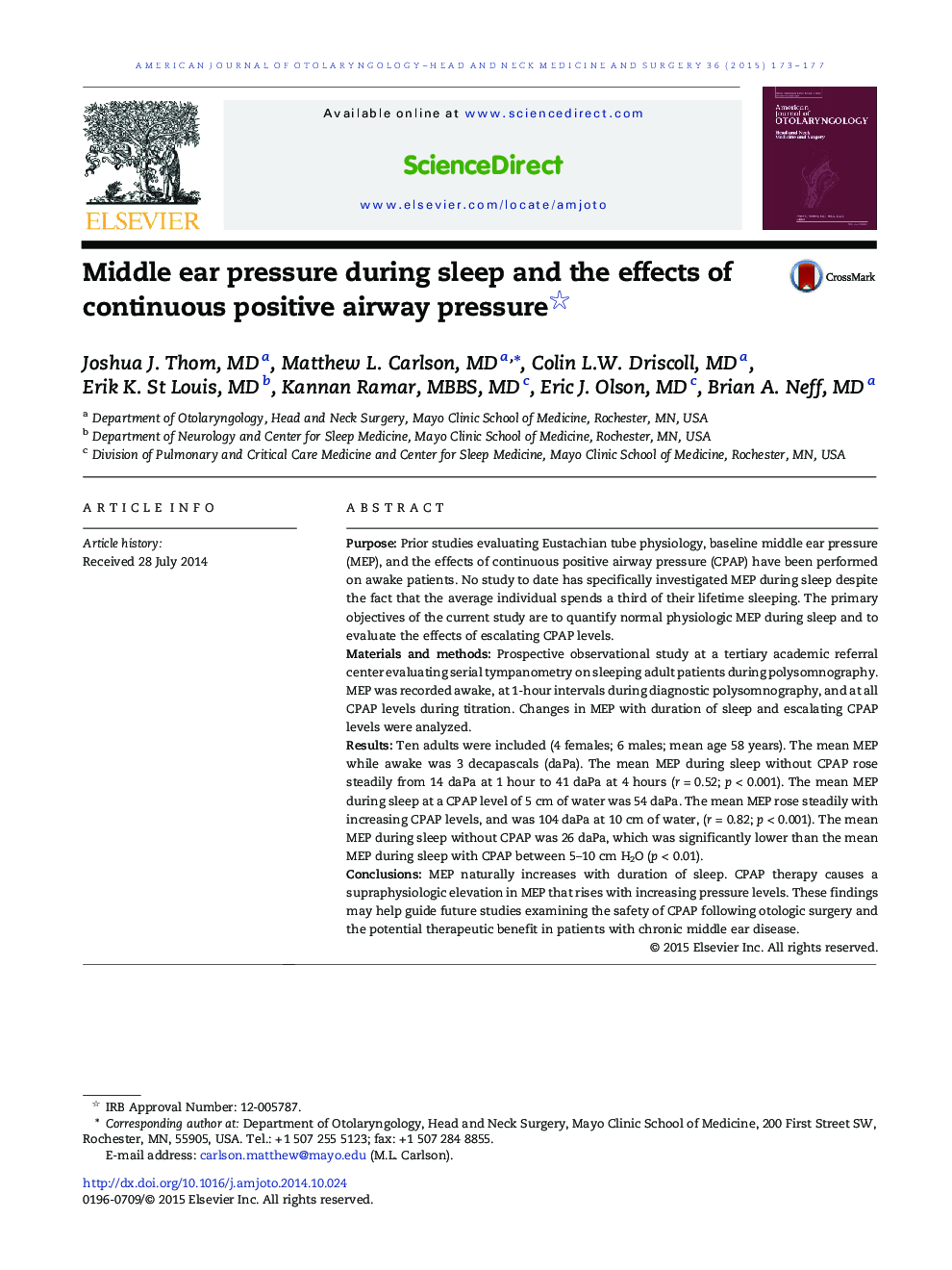| Article ID | Journal | Published Year | Pages | File Type |
|---|---|---|---|---|
| 4103192 | American Journal of Otolaryngology | 2015 | 5 Pages |
PurposePrior studies evaluating Eustachian tube physiology, baseline middle ear pressure (MEP), and the effects of continuous positive airway pressure (CPAP) have been performed on awake patients. No study to date has specifically investigated MEP during sleep despite the fact that the average individual spends a third of their lifetime sleeping. The primary objectives of the current study are to quantify normal physiologic MEP during sleep and to evaluate the effects of escalating CPAP levels.Materials and methodsProspective observational study at a tertiary academic referral center evaluating serial tympanometry on sleeping adult patients during polysomnography. MEP was recorded awake, at 1-hour intervals during diagnostic polysomnography, and at all CPAP levels during titration. Changes in MEP with duration of sleep and escalating CPAP levels were analyzed.ResultsTen adults were included (4 females; 6 males; mean age 58 years). The mean MEP while awake was 3 decapascals (daPa). The mean MEP during sleep without CPAP rose steadily from 14 daPa at 1 hour to 41 daPa at 4 hours (r = 0.52; p < 0.001). The mean MEP during sleep at a CPAP level of 5 cm of water was 54 daPa. The mean MEP rose steadily with increasing CPAP levels, and was 104 daPa at 10 cm of water, (r = 0.82; p < 0.001). The mean MEP during sleep without CPAP was 26 daPa, which was significantly lower than the mean MEP during sleep with CPAP between 5–10 cm H2O (p < 0.01).ConclusionsMEP naturally increases with duration of sleep. CPAP therapy causes a supraphysiologic elevation in MEP that rises with increasing pressure levels. These findings may help guide future studies examining the safety of CPAP following otologic surgery and the potential therapeutic benefit in patients with chronic middle ear disease.
